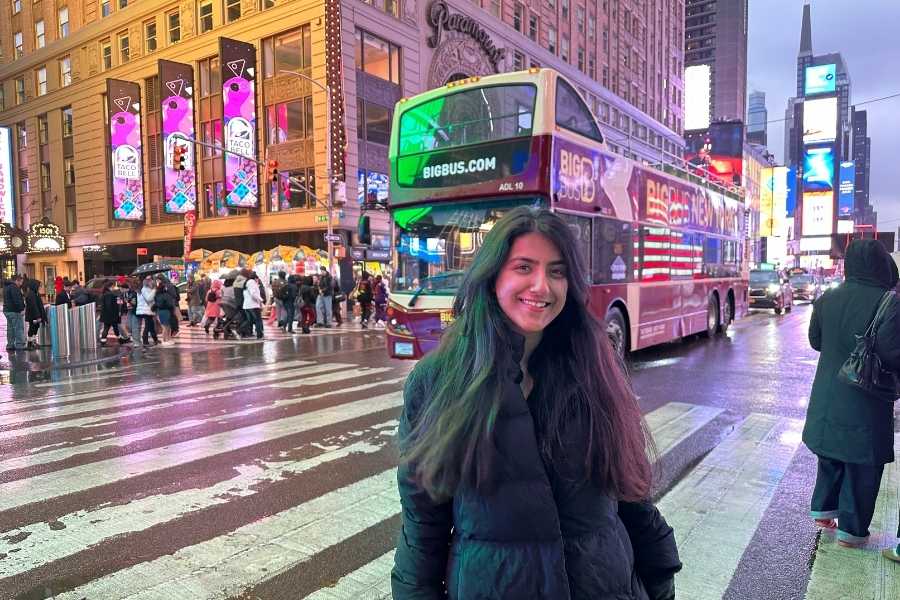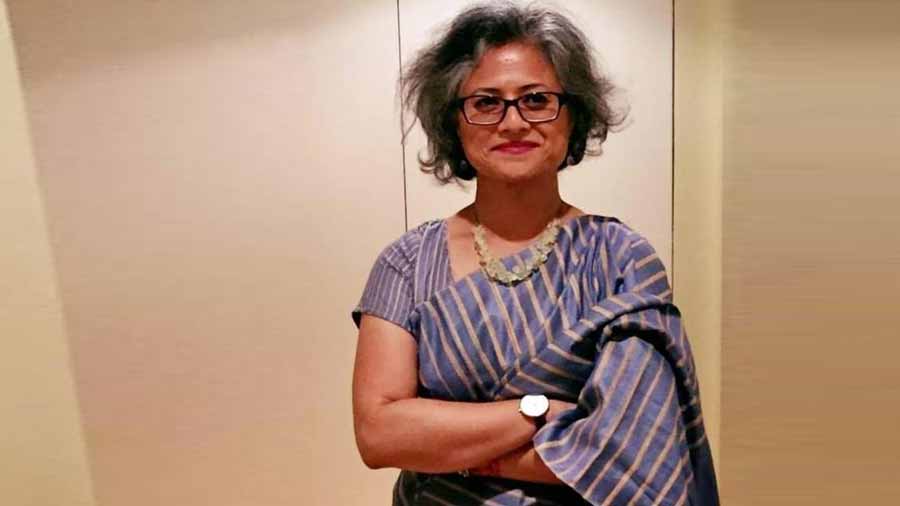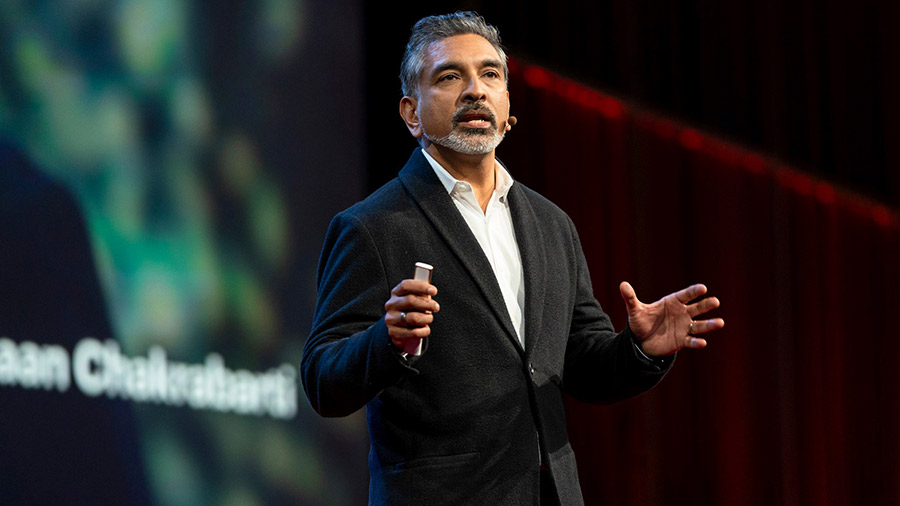On a sunny fall day, as I strolled through the streets of the Upper West Side in New York City, I stumbled upon a copy of Amartya Sen’s autobiography, Home in the World: A Memoir. The book was left out on the sidewalk — a common practice in New York, where residents often leave a range of paraphernalia, including books and furniture for passersby to collect. Spotting Sen’s memoir felt like a serendipitous sign from the universe, almost as if it was waiting to be picked up by me. Its title is a play on Rabindranath Tagore’s novel The Home and the World. Like Sen’s reflections on his journey through Bengal and beyond, I have been navigating and interpreting my Bengali identity — a phenomenon I continue to investigate through my academic pursuits and social media.
Amartya Sen’s reflections of his time in America echo some of my own experiences
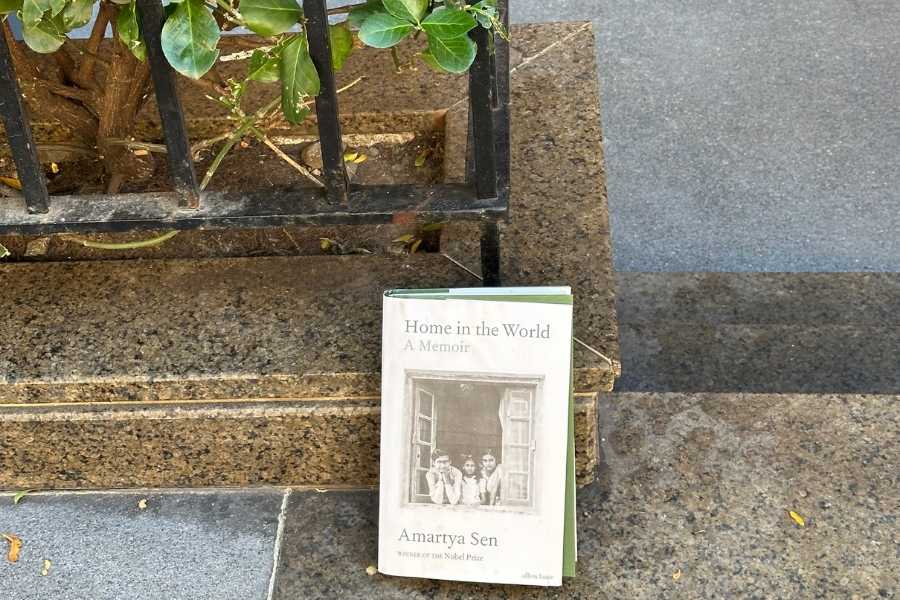
The copy of ‘Home in the World’, which reached the author almost serendipitously
Sen’s Home in the World delves into the duality of the two Bengals, Bangladesh and West Bengal, as he reflects on his childhood in Dhaka and his experiences in Bengal at large. He also writes about Kolkata extensively, through the chapter entitled “The Urbanity of Calcutta”, wherein he refers to the city using borrowed phrases and characterisations, such as “the city of dreadful night”, “the city of palaces”, and “the second city of the empire”. These epithets underlined the importance of the port city in the context of British imperial rule that made its inroads to India through Bengal.
Sen’s reflections of his time in America echo some of my own experiences, especially in the context of the university and student protests in the 1960s. Sen spent a considerable amount of time in the US, along with his partner Nabaneeta Dev Sen, across different university campuses, and was privy to some of the ongoing protests. In the spring of 1968, he was present at Columbia University, when the student protesters had come out to raise their voice against the construction of a gymnasium at Morningside Park in the Harlem area of NYC, accusing the university authorities of taking away land from the residents of Harlem. They referred to the act of constructing the proposed gymnasium as ‘Gym Crow’, a wordplay that critiqued the Jim Crow laws that enforced racial segregation in the country. At this point, the agitators had ‘occupied’ various buildings in the university campus, including Hamilton Hall. The same building was dragged into global headlines this year, as student protesters demanding the university’s divestment from Israel occupied the building and referred to it as Hind’s Hall in the memory of the five-year-old girl, Hind Rajab, who was killed in Palestine.
Living in NYC has challenged my understanding of what it means to be Bengali
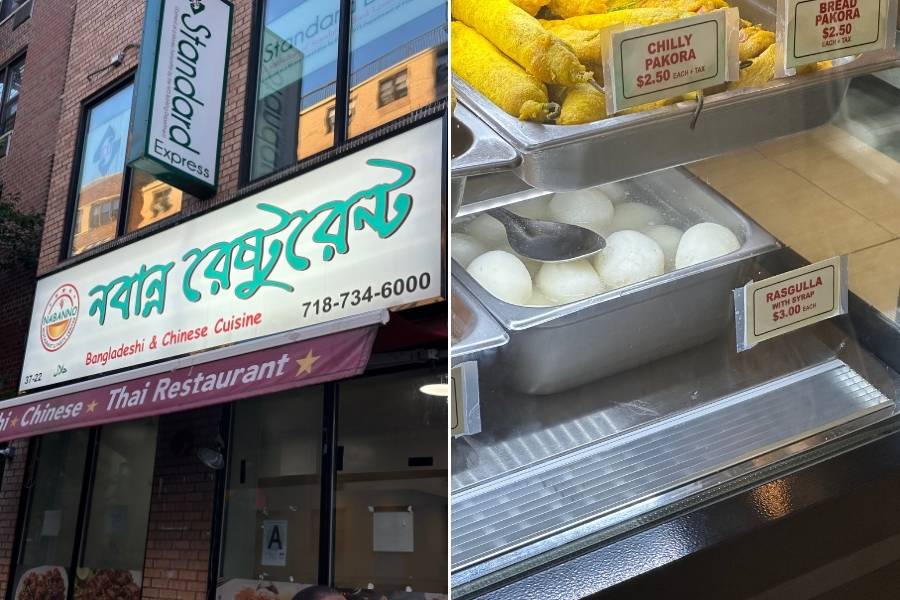
Food is a big part of the dichotomies of being a Bengali in NYC
As I move between the US and India, NYC and Kolkata, I reflect on the things that are drastically different. While price differences are expected, I was startled by the shapes of vegetables in India on my most recent visit back home, almost as if I were a newcomer here. In America, vegetables are uniformly shaped. But at a Spencers outlet in Kolkata, where I saw a cucumber with a protruding bottom, almost hourglass-shaped, I couldn’t recognise it as a cucumber. My eyes were accustomed to the slim, cylindrical ones I have been seeing of late in the US.
While living in Kolkata, a duality of identity, or the way Sen writes about ‘the two Bengals’, did not pique my interest as such. But it took on new meaning after I moved to New York in the pursuit of a Master’s degree. Living in NYC has challenged my understanding of what it means to be Bengali, a term that carries different connotations depending on the situations we find ourselves in. In India, being a Bengali is usually understood through the lens of West Bengal’s cultural traditions, but outside the country, especially in the West, it frequently refers to the Bangladeshi diaspora.
This distinction becomes particularly apparent in NYC, home to a substantial Bangladeshi population, especially in neighbourhoods like Jackson Heights in Queens. The differences between the two Bengals manifest in various ways, from religious practices and food habits to the ways in which we speak the language itself. For instance, kachchi biryani, a dish beloved in Bangladesh, contrasts with the Indian Bengali’s preferences for bekti, luchi and mangsho. Kolkata’s biryani, infused with potatoes and subtler spices, stands apart from its Bangladeshi counterpart. In NYC, we find trucks selling ‘fuska’ in aluminum containers, while on the streets of Kolkata, phuchkas are consumed in containers made out of shaal leaves, with the phuchka seller customising the contents of the filling depending on the customer’s preferences.
The spirit of south Kolkata’s Durga Puja in Times Square
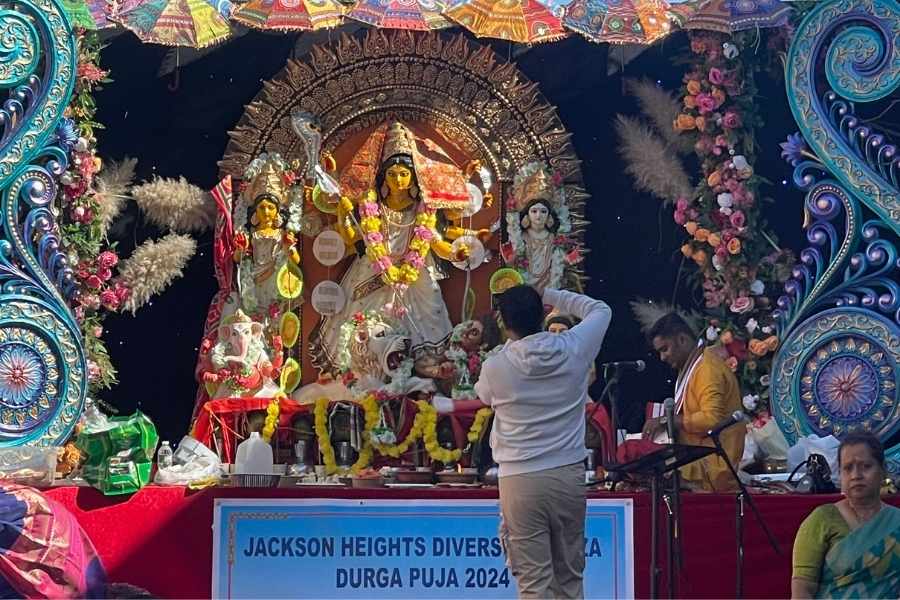
Durga Puja being celebrated at Jackson Heights in NYC’s Queens in 2024
Harlem, a neighbourhood in NYC, is renowned for its Renaissance in the 1920s and ’30s. Vivek Bald’s In Search of Bengali Harlem mentions people from Bengal moving to Harlem during the British Raj and marrying locals. I wonder if any traces of that Bengali presence remain today or if they’ve vanished due to miscegenation. Harlem is certainly not as Bengali as Jackson Heights, which makes Bald’s work all the more significant. While snow blankets Christmas trees at places like Rockefeller Center and Washington Square Park, back home, scraps of cotton serve the same purpose. As people gathered around the Christmas tree at Rockefeller Center, the police began managing the crowds by pulling ropes to control the flow of pedestrians in specific directions. It reminded me of how the Kolkata Police handle Durga Puja crowds in a similar manner. In 2024, the festival of the goddess was celebrated in what some might call the heart of Manhattan — Times Square — for the first time.
The nature of diaspora Durga Puja celebrations has been evolving rapidly, with South Asian festivals now being celebrated with greater grandeur and extravagance. Traditionally, rituals and celebrations were modest, often conducted in rented indoor spaces such as warehouses or parking lots, reflecting a sense of restraint and inconspicuousness. However, breaking away from these conventional characteristics of diaspora Durga Pujas, an idol of the goddess was not only displayed at Diversity Plaza in Jackson Heights, as they have been doing for several years, but was also on display and worshipped in the heart of Times Square in Manhattan for three days. Against the vibrant backdrop of Times Square — its dazzling lights, vivid colors, and constant energy — the throngs of people dressed in sarees and other traditional attire created an atmosphere reminiscent of pandal hopping in the streets of South Kolkata, moving from Samaj Sebi to Ballygunge Cultural. This remarkable shift highlights the growing confidence and cultural assertion of the diaspora, bringing the essence of Durga Puja to one of the most iconic urban spaces in the world. Being Bengali in New York City definitely took on a new meaning.
Bengali seems to have a more prominent presence in NYC than Hindi
New York City has created a space where Bengali culture, in its many forms, thrives. Bengali words are a common sight in subway advertisements, such as those promoting OMNY, the city’s contactless payment system, or public school programmes that emphasise inclusivity and linguistic diversity. When I visited a restaurant called ‘Oh! Calcutta’in Long Island City, I was curious to see how it captured the essence of the city I am so familiar with. The food, however, didn’t quite evoke the flavors of authentic Kolkata cuisine. It felt like a distant echo rather than the real thing. In contrast, the Kathi Roll Company in Midtown offered a more tangible connection to Bengali culture. Its exposed brick walls were adorned with fragments of Bengali and Hindi film posters, and the rolls were adequately spiced.
Remarkably, Bengali seems to have a more prominent presence here than Hindi, a language that often looms larger in the consciousness of Indian Bengalis. This can be attributed to the fact that Bengalis are the third largest ethnic group in the world, after the Han Chinese and the Arabs.
In India, my sense of being Bengali was rooted in the traditions of West Bengal, but here in NYC, it has expanded to encompass a transnational and diasporic perspective. Living abroad forces you to see yourself through a broader lens. As a South Asian, you find solidarity with people from neighbouring countries, despite strained diplomatic ties. Shared cultural elements — food, language and customs — build bridges that politics cannot. Conversations often revolve around common experiences, like cricket, Bollywood or festivals, creating a sense of belonging that transcends borders. It’s a reminder that identities are fluid and often shaped by the spaces we inhabit.
Rajita Banerjee is an M.A. candidate in South Asian Studies at Columbia University, New York City. Her interests lie in cultural history and storytelling. Beyond academia, she is a content creator on Instagram, where she shares her thoughts and ideas @ogobideshinee
